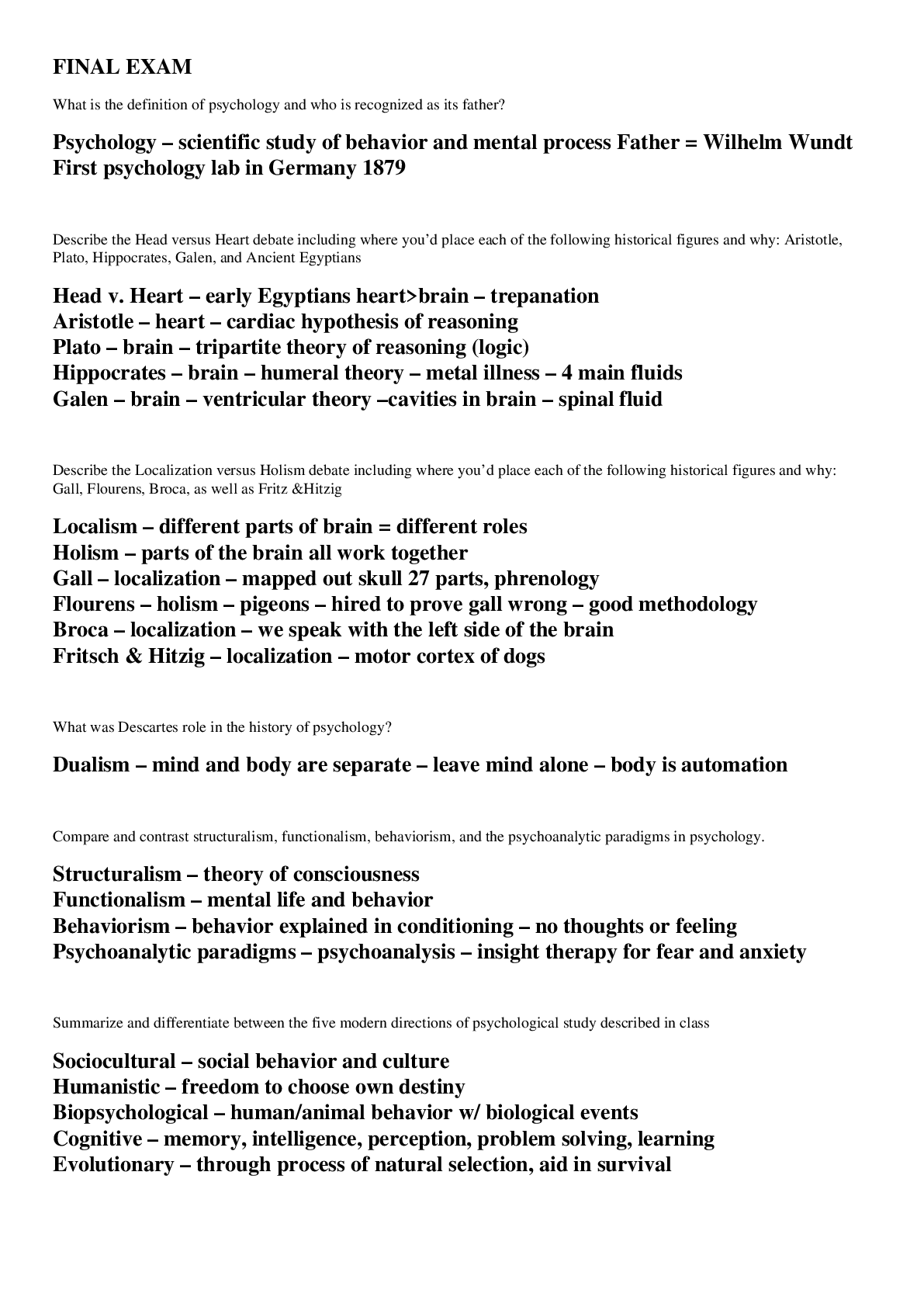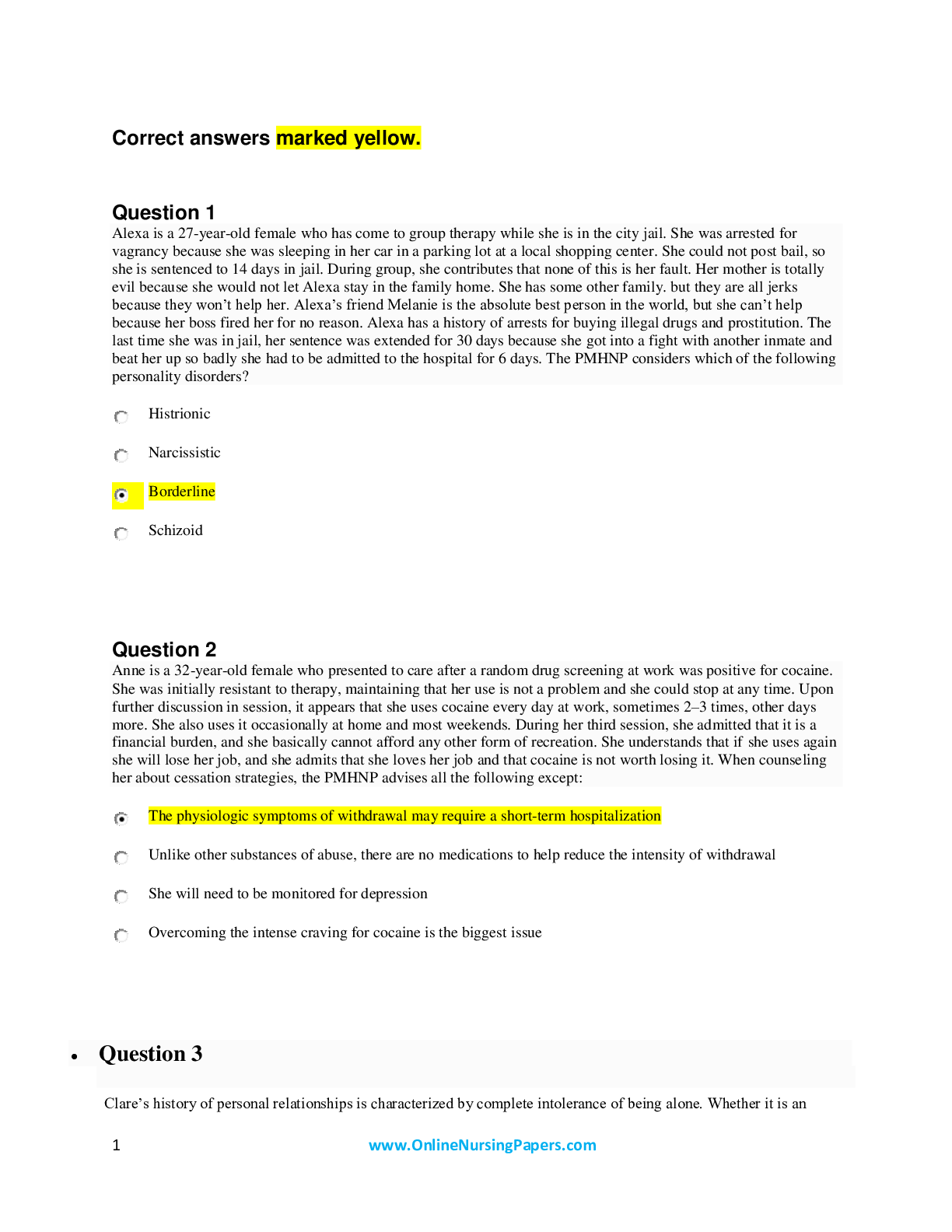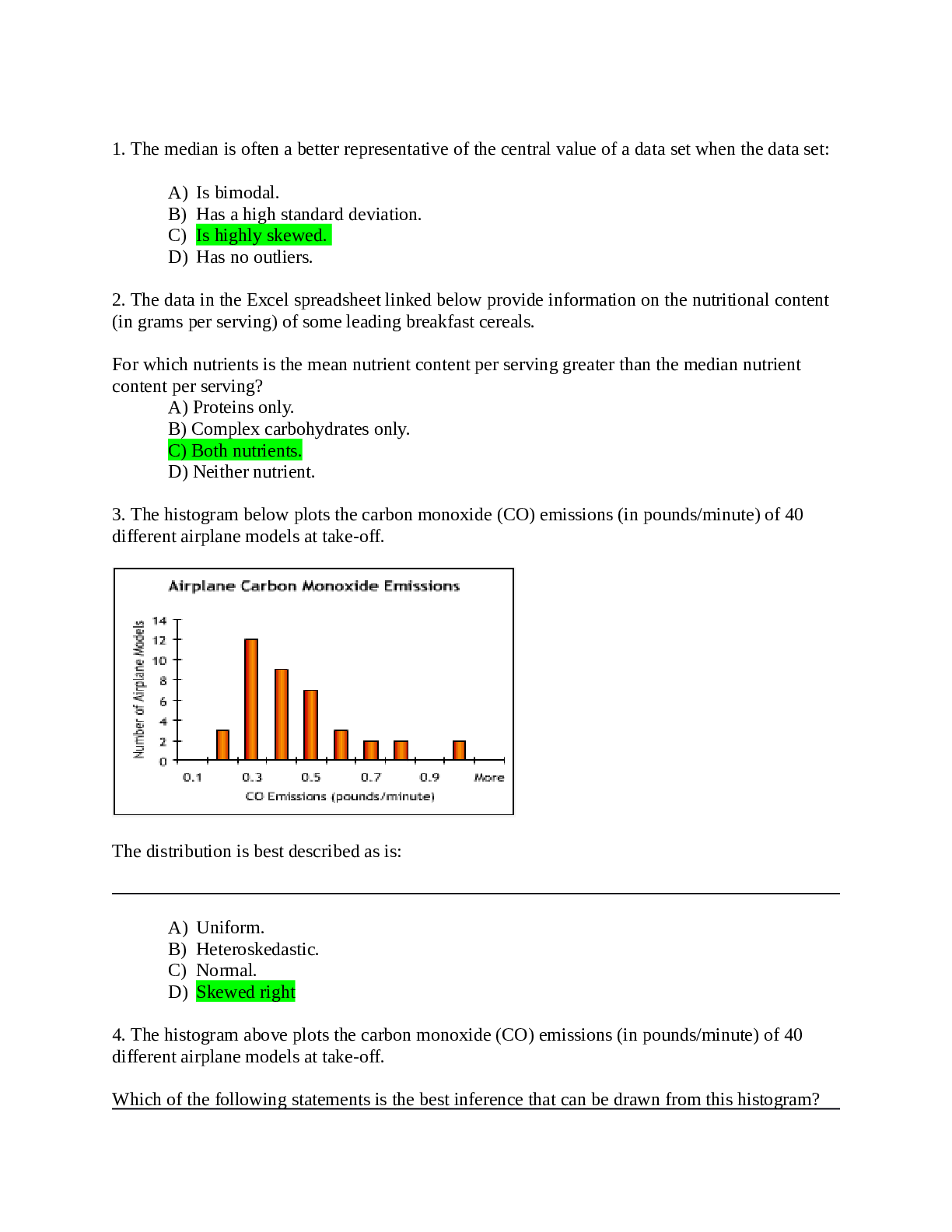Electronics > QUESTIONS & ANSWERS > California Polytechnic State University, San Luis Obispo - EE 308EE308_HW3_F2018soln ( 100 % CORRECT (All)
California Polytechnic State University, San Luis Obispo - EE 308EE308_HW3_F2018soln ( 100 % CORRECT AND COMPLETE SOLUTIONS )
Document Content and Description Below
EE308 Analog Electronics and Integrated Circuits HW3 - Assigned: 9/30/18 Due: 10/5/18 SOLUTIONS: /60 This assignment will introduce you to one more ability of LTSpice, some practice on design, and ... get touchy feely. Reminder: Because we will be talking about both MOSFETs and BJTs in this class, I’d like to use common terms for the regions between the two. I will use the boldface terms: Region BJT MOSFET What I will call it Importance 1 Cutoff Cutoff, subthreshold Cutoff 2 Saturation Linear, ohmic, resistive Linear 3 Forward active Saturation, pinchoff Active Region we like If a question is taking much time at all, write to me for help. We’ve talked about four types of simulations: AC sweep, DC sweep, .op and transient. Before you do a simulation, make sure you select the correct type of simulation that will give you the information that you are trying to get. Engineering economics. The earlier in the design flow you find a problem, the less it costs your company. If you find a problem when you’re doing scribbles on a notepad it costs your company hardly anything. When you make a prototype, it cots a little more. When you have to do a recall it can destroy a company. So, before you put a product out or start a business, as mentioned last week, really try to foresee all possible scenarios……1) LTSpice (Those in my sections of EE307 have already seen this) Here’s a new technique that will allow you to sweep any value, not just voltages and currents. By “any value” I mean resistances, capacitances, temperature, etc. In a SPICE deck (a text SPICE program) it is specified by the ‘.PARAM’ directive. Here’s how you make values sweepable: When doing a graphical (drag and drop) circuit entry, there are two things you need to do. Instead of giving a resistor value like 1K, put in a name surrounded by curly brackets like {RC}. The second thing you need to do is click on the .op icon and enter: .param RC=1k: The curly brackets tells LTSpice that you are setting that value to a variable. The .param sets a value to that variable. This useful in a couple of situations: 1) for sweeping things other than supplies and 2) if you want to use the same value in, say, twenty places but you want to be able to change all of them to a new value easily all at the same time. If you set all those places to the variable (not the value) then you just need to change the value in the .PARAM statement to change all twenty places at once. The value you set in the .PARAM directive doesn’t matter if you are sweeping that value but you have to give it some value or the compiler will complain. Don’t forget to change the type to MPS650 or MPS750 and to enter the path to the model file so the simulator knows how the transistor is supposed to behave. Let’s say you want to find a resistor that will give you an output centered around 5V when VBE=0.603V. First set VBE=0.603V and then set the simulator values on the DC sweep as follows: Don’t forget the ‘param’ before RC. That tells LTSpice to look for something defined in a .PARAM statement. When you run this simulation the output voltage will change as RC changes: To find where the output equals 5V use a cursor (right click here and select “Attached cursor - first” . That should allow you to drag the cursor along the graph line. The position of the cursor is displayed in aseparate little window). NOTE: that the value that you sweep is shown on the X-axis. Whether you swept a voltage, a resistance, a capacitance, a temperature, a current or whatever. a) For VBE=0.603V and VDD=10V, use a DC sweep to find the resistance where the output sits at 6V. (Sweep the resistance). Include a screen capture with the graph and the little cursor readout window. If Alt+PrntScrn misses one of the windows, use Ctrl+PrntScrn and then trim it in paint. If you have questions on capturing a picture of the screen, ask me. You can get better accuracy if you can zoom in or do a smaller sweep. ANSWER: (Total:4pts. Resistance2pts, Screen capture2pts) Extremely zoomed in: RC=872.392Ω A little more reading before the next question. There are a few ways to find the gain of an amplifier that I will expect you to know about for this class. Here they are: ① In lab you’ll put a sine wave of amplitude Ain into your amplifiers and watch the amplitude out of your amplifier, Aout. The amplitude is the maximum voltage minus the minimum voltage so it’s actually ΔV. So Ain=VinMAX-VinMIN or Ain=ΔVin. The same thing for Vout. So you have a ΔVin and a ΔVout. Gain is defined as ΔVout/ ΔVin so you can get gain by: [Show More]
Last updated: 1 year ago
Preview 1 out of 12 pages
Instant download

Buy this document to get the full access instantly
Instant Download Access after purchase
Add to cartInstant download
Reviews( 0 )
Document information
Connected school, study & course
About the document
Uploaded On
Apr 06, 2021
Number of pages
12
Written in
Additional information
This document has been written for:
Uploaded
Apr 06, 2021
Downloads
0
Views
38



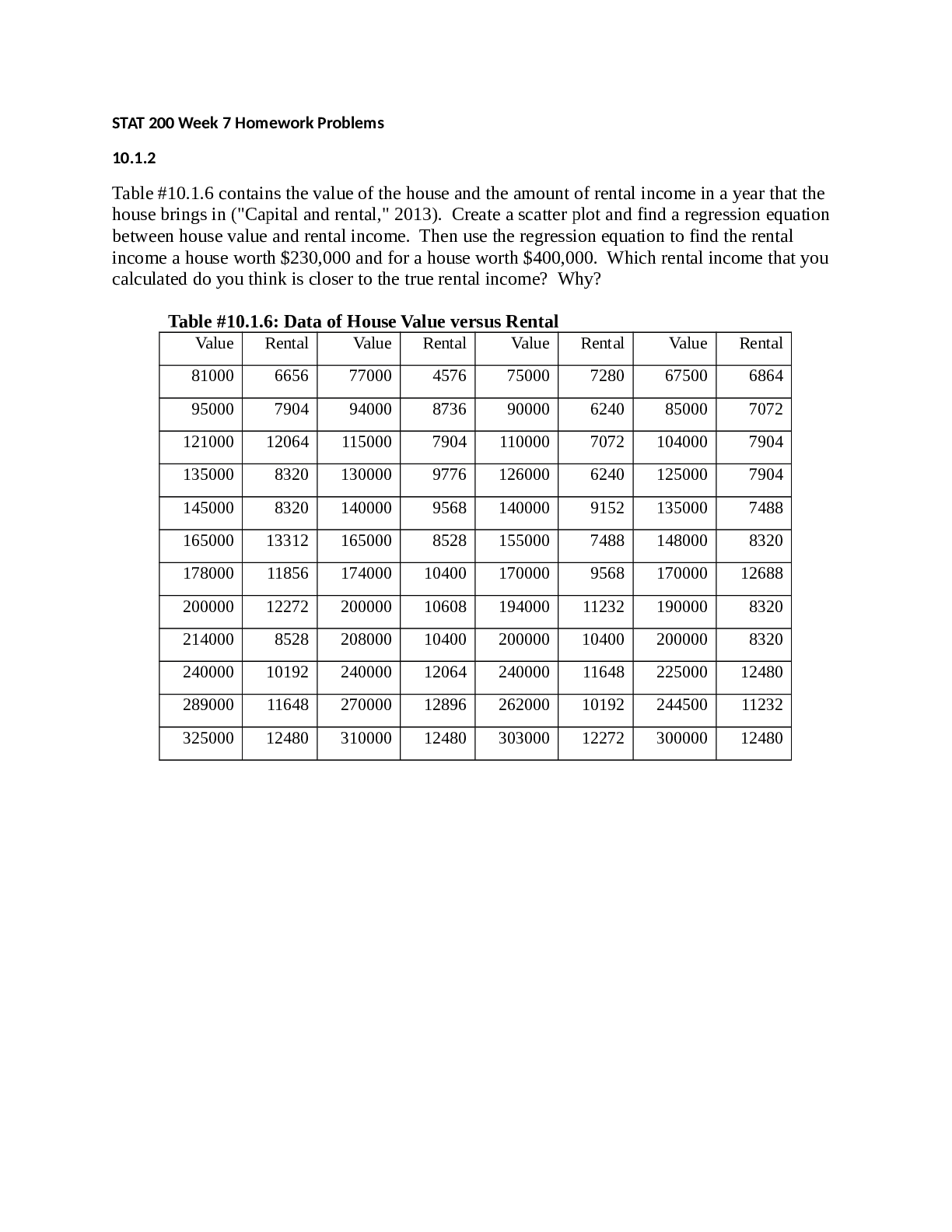
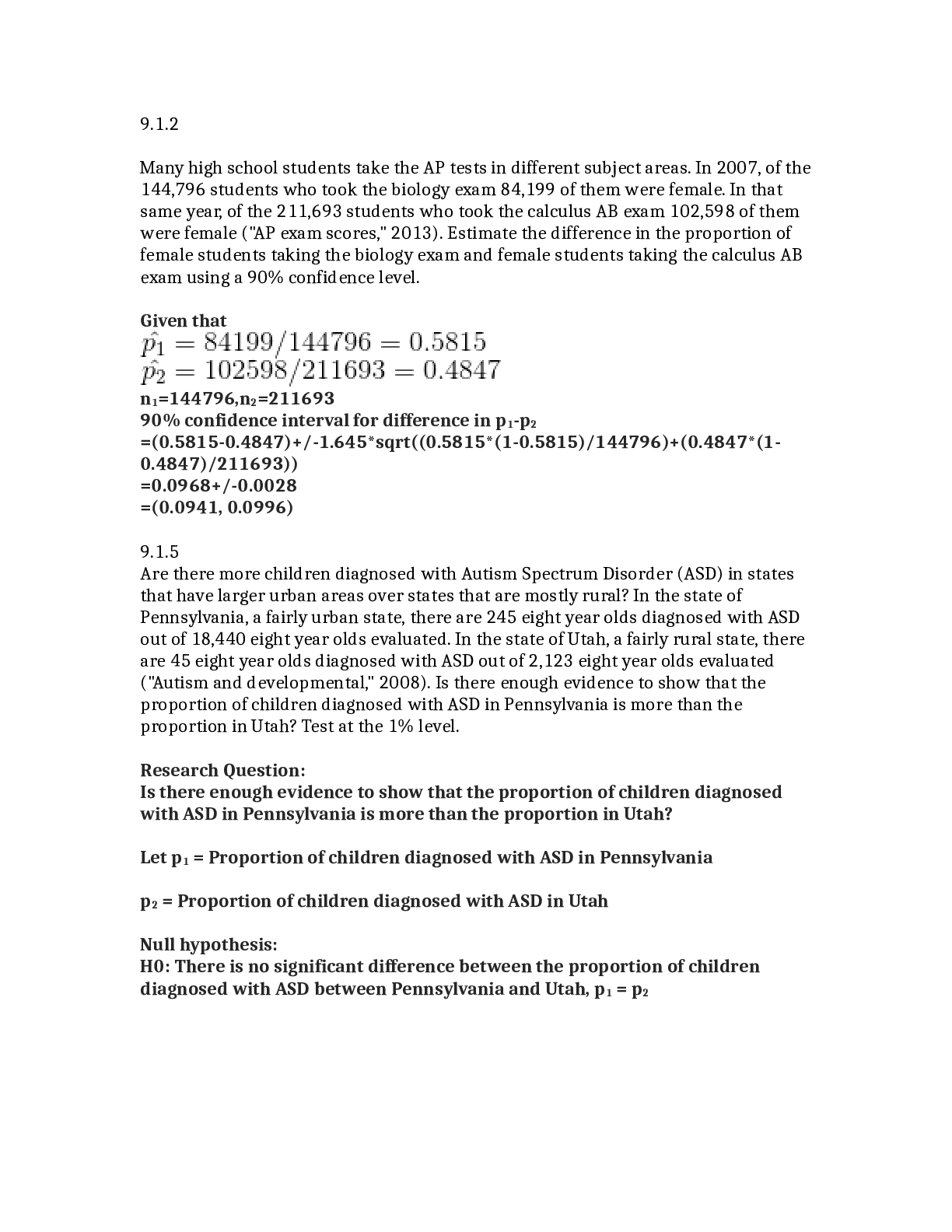



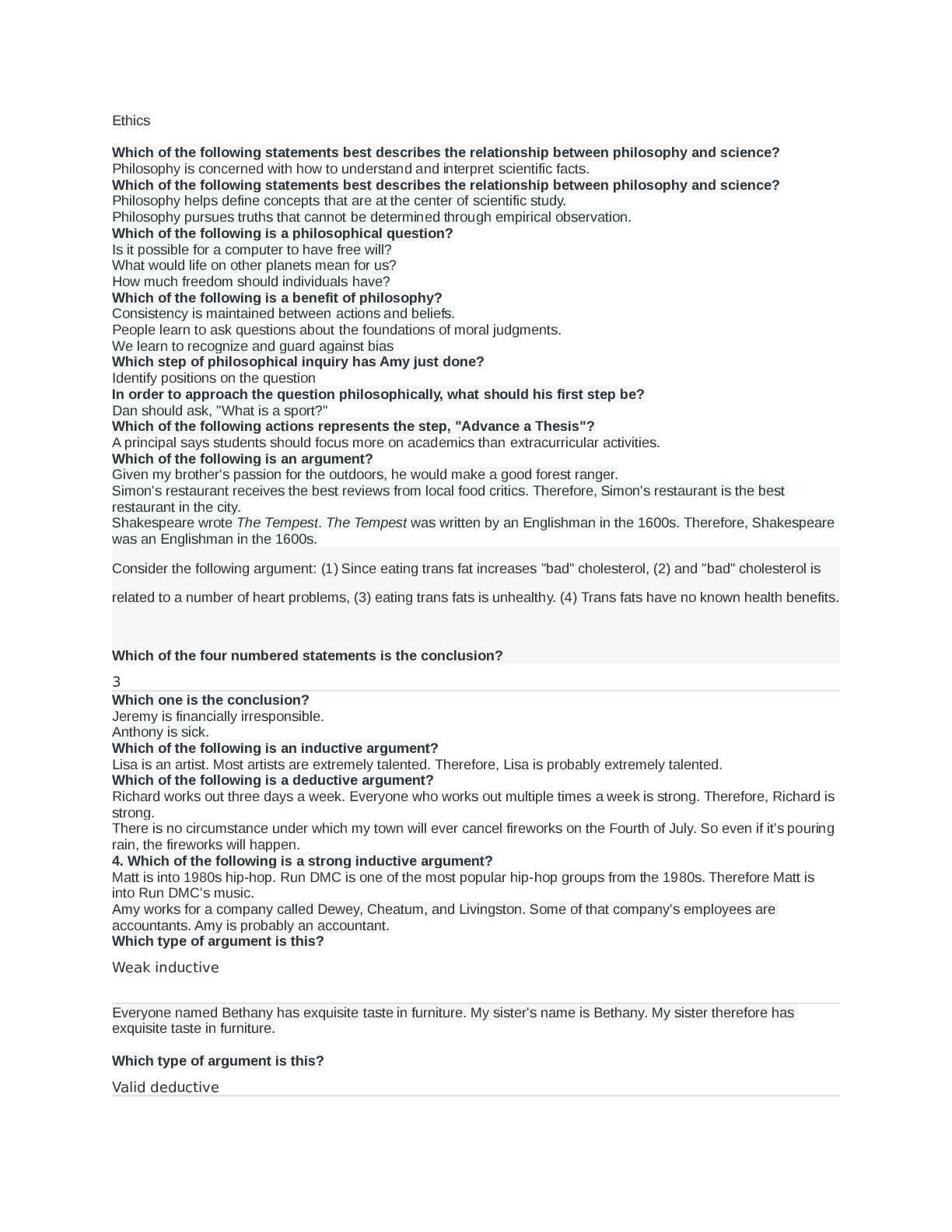

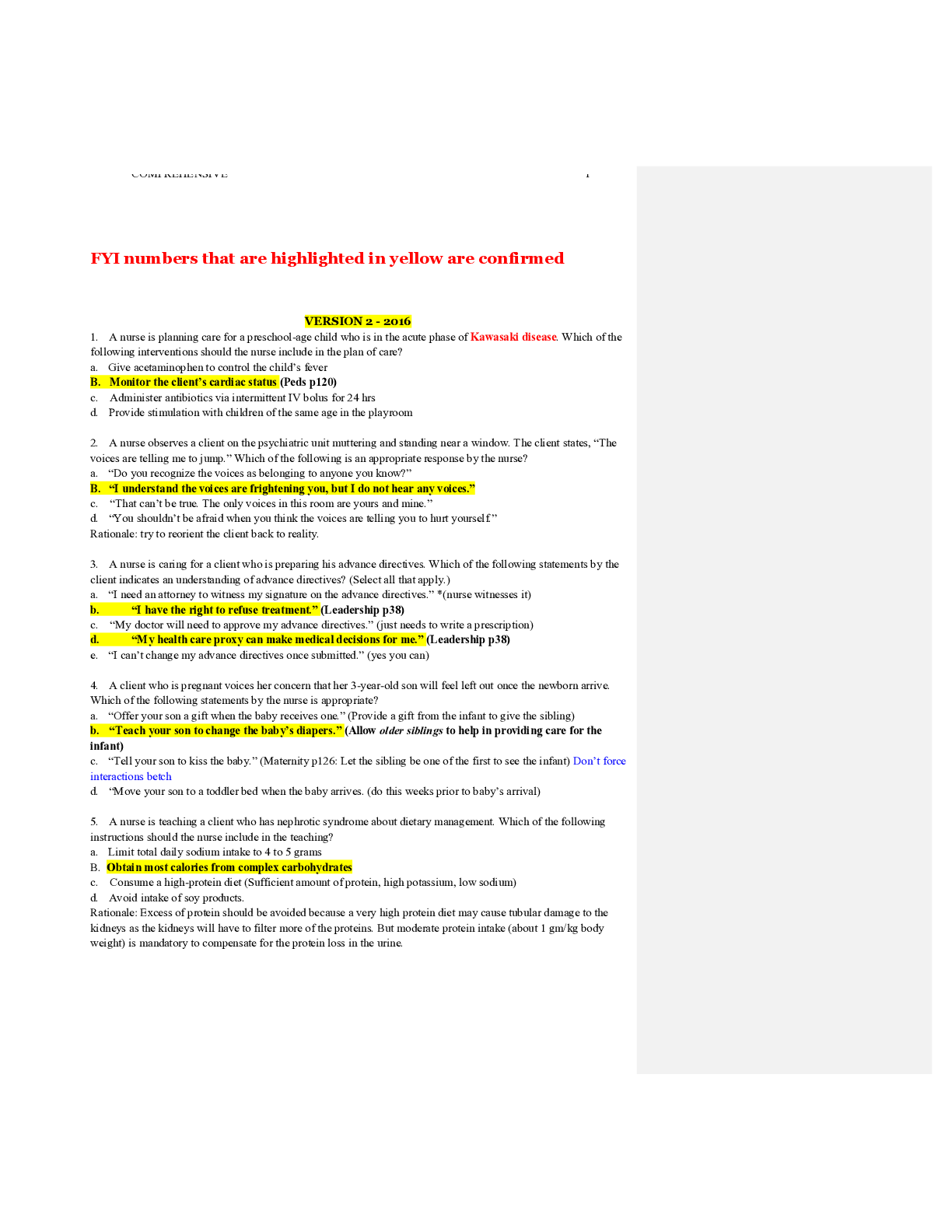
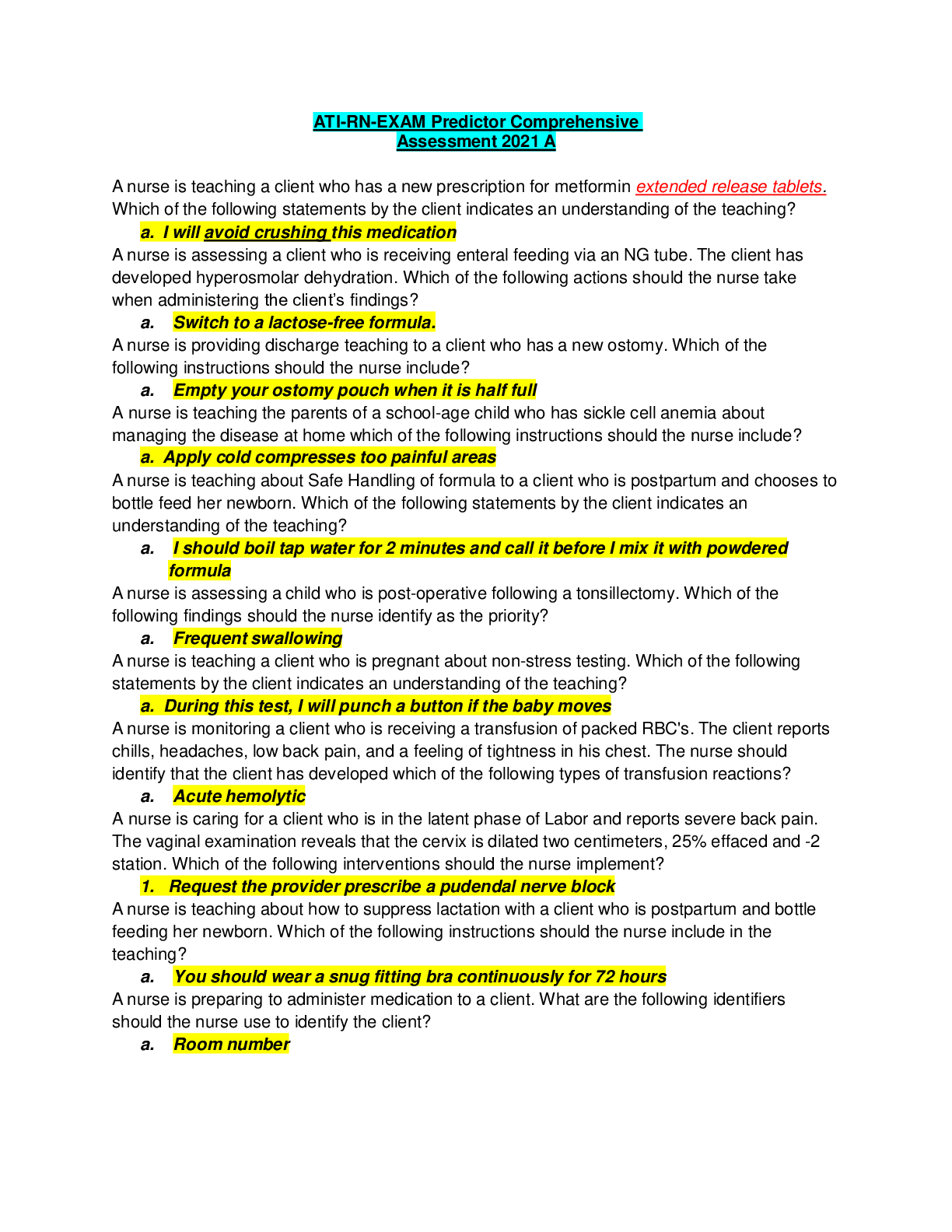


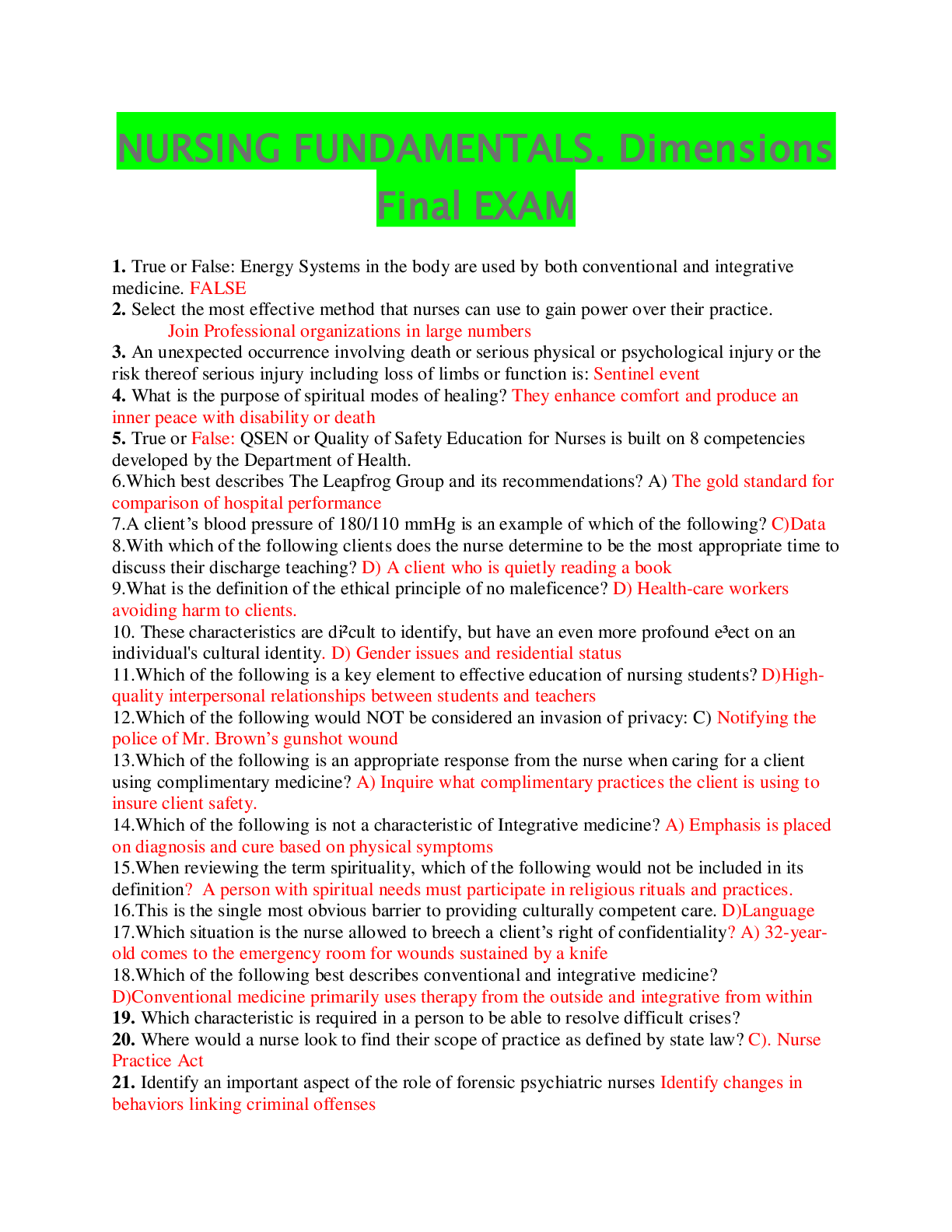
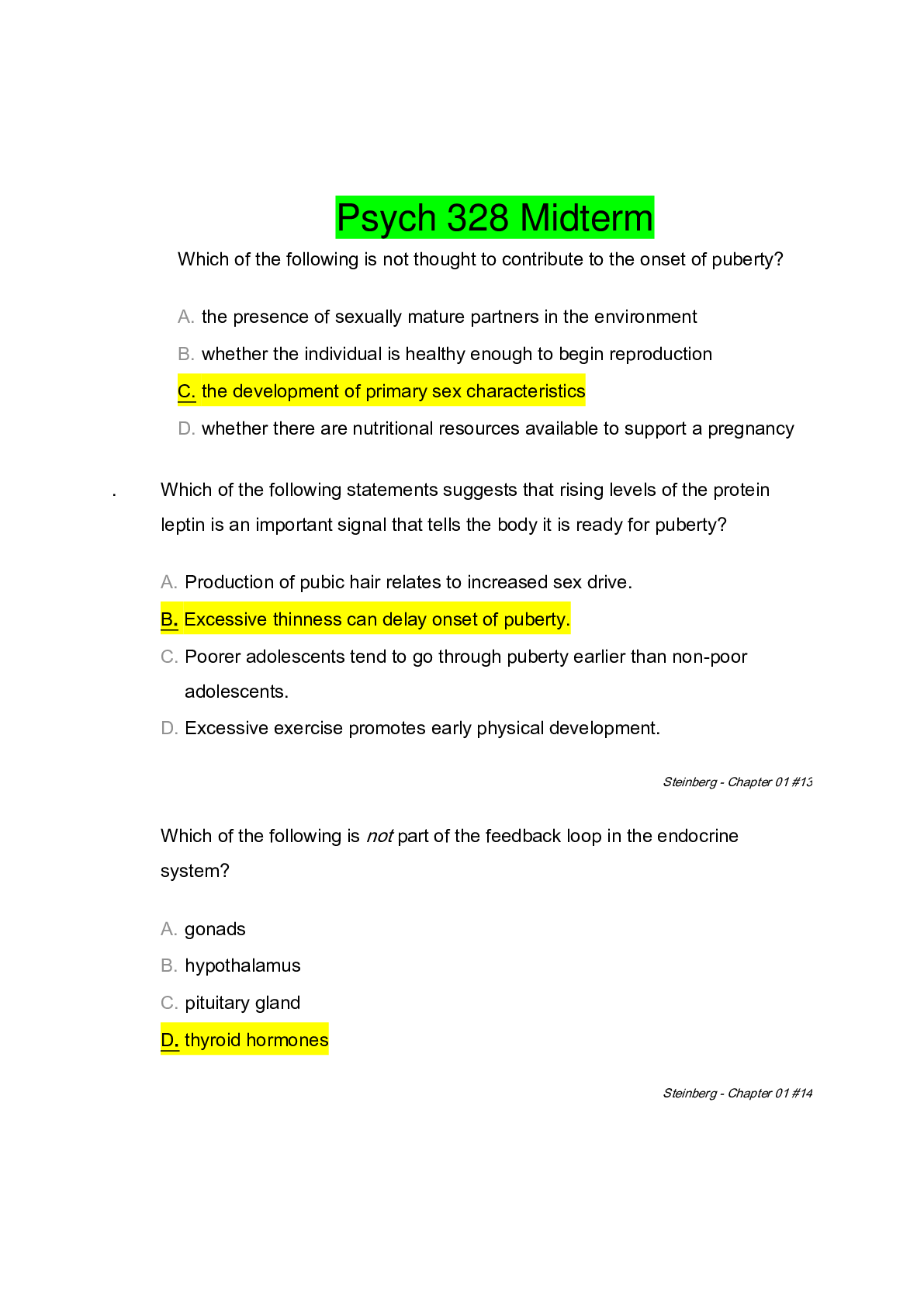
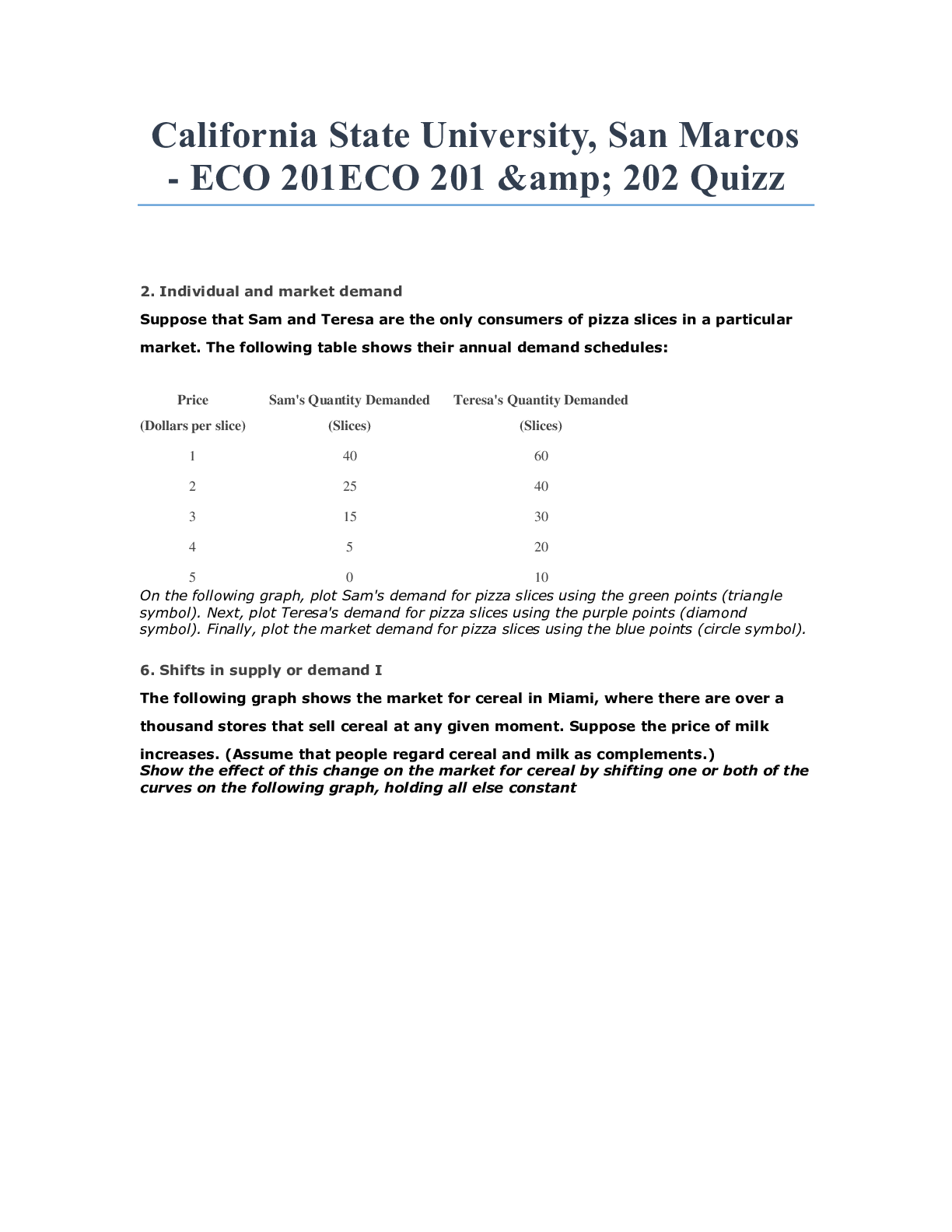
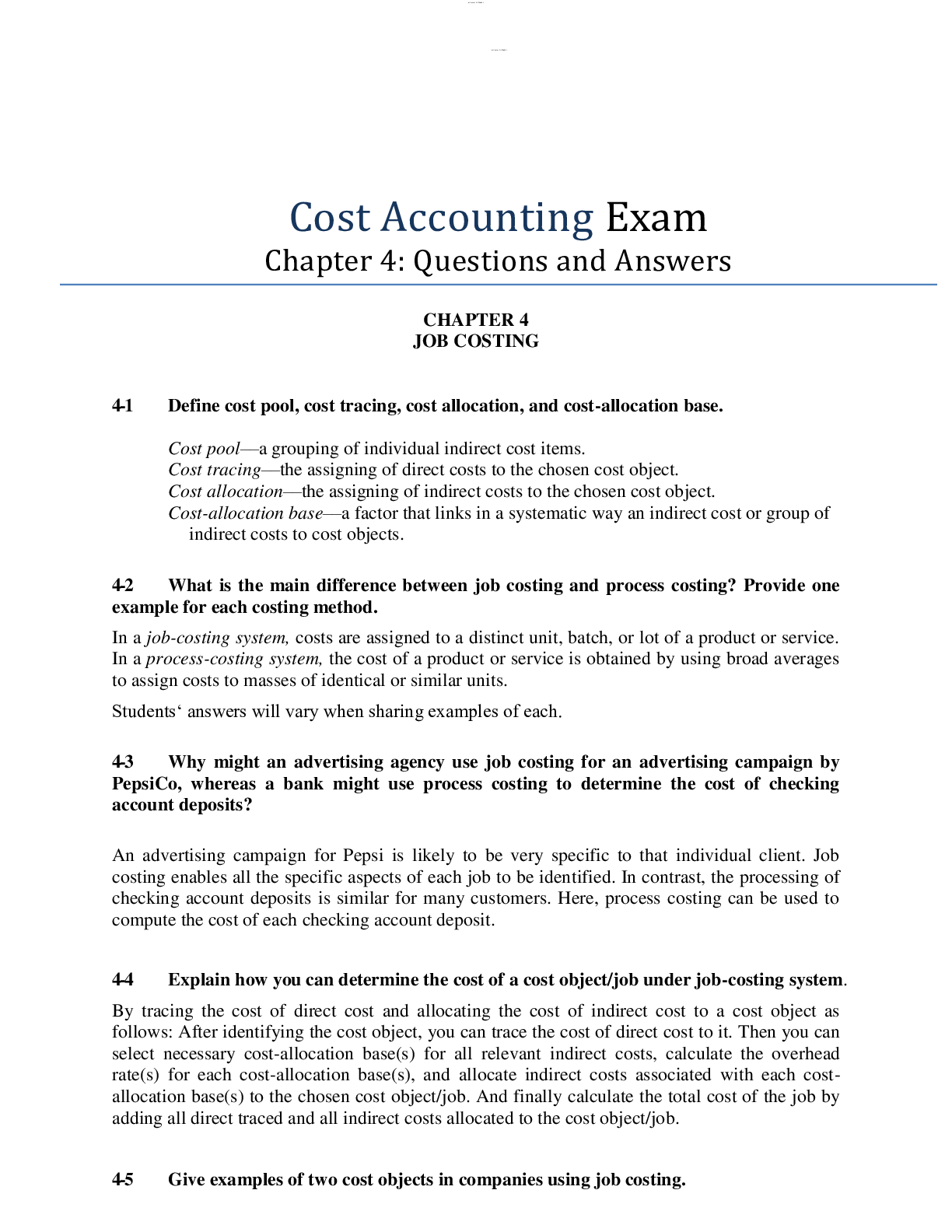
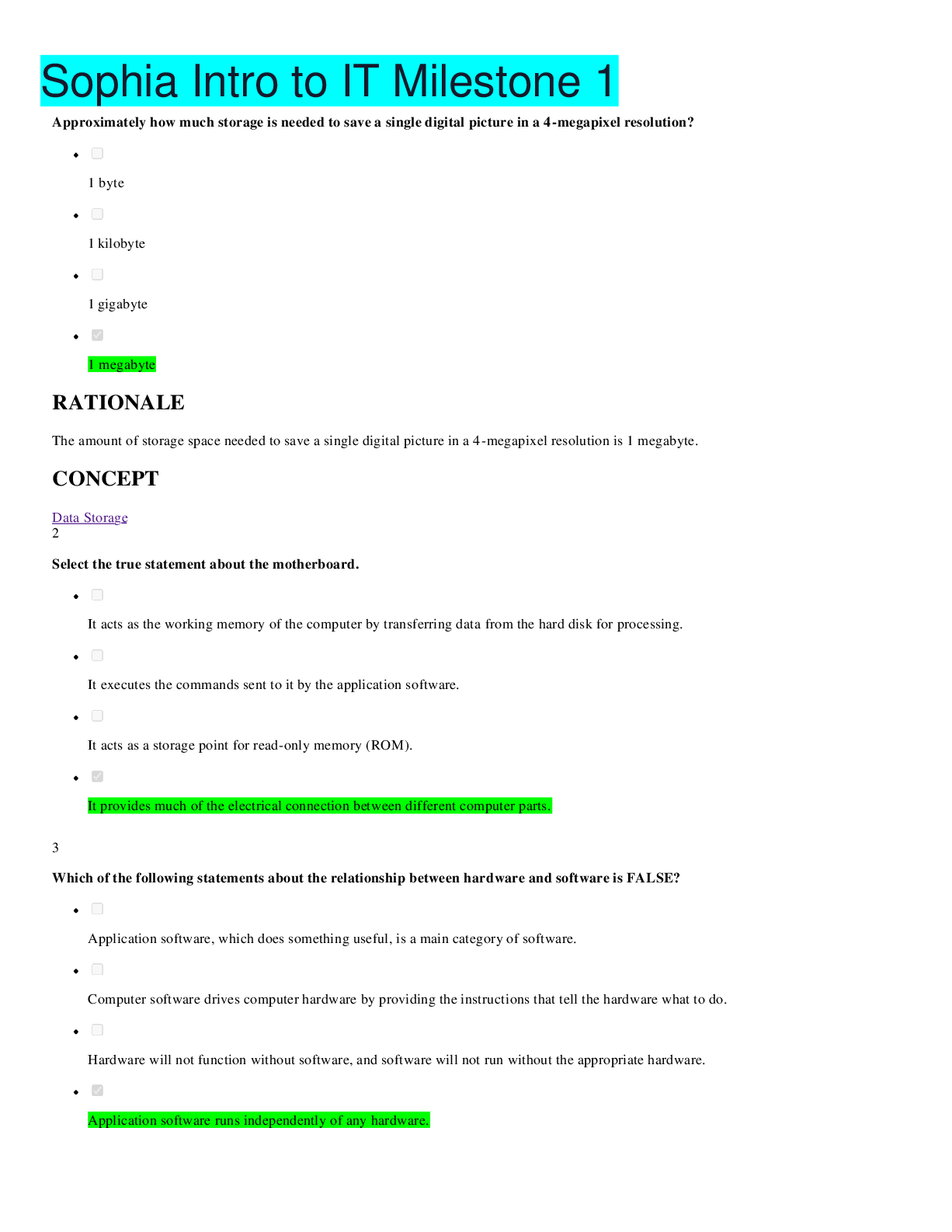
.png)

.png)
